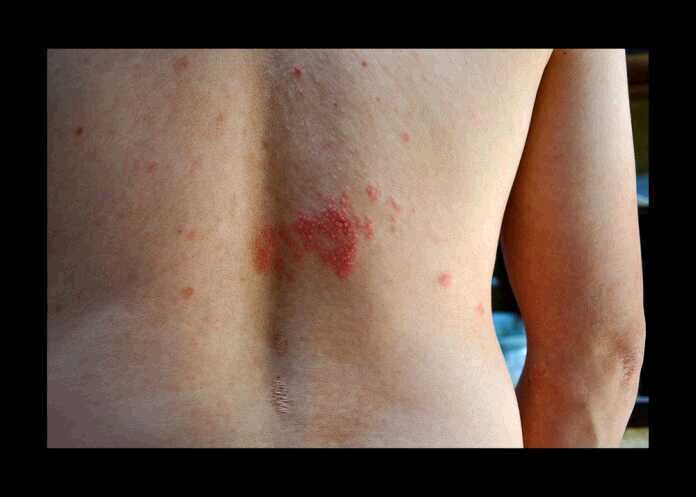
Shingles is a viral infection often causing a painful, itchy rash. It is caused by the varicella-zoster virus–the same virus causing chickenpox. If you had chickenpox when you were younger, the virus remains inactive in nerve tissues near the spinal cord and brain. In time, the virus may reactivate causing shingles.
Symptoms of Shingles
The rash from shingles usually affects a small part of one side of the body as a stripe of blisters. Other times, it can show up around an eye or one the side of the neck or face. The condition isn’t life-threatening, but it could be very painful. The Mayo Clinic outlines symptoms of the rash.
- Pain, numbness, tingling, itching or burning
- Sensitivity to touch
- Fluid-filled blisters breaking open and crusting over
- Fever
- Fatigue
- Sensitivity to light
- Headache
Myths about Shingles
The National Foundation for Infectious Diseases helps debunk some common myths about shingles. These include:
Myth: The rash is shingles’ biggest problem.
The rash associated with shingles is the prominent symptom. Anyone experiencing the infection, however, can attest to the pain, throbbing, and burning of the area which could last even after the rash has cleared. Complications of shingles could include loss of hearing or vision, long-term nerve pain, scarring, and skin infection.
Myth: Shingles is an old person’s problem.
While shingles often affects older people, it could occur in just about anyone. Those with immune systems weakened by HIV, AIDs, cancer, or treatment with certain drugs have a greater chance of developing the condition.
Myth: I can’t prevent shingles.
Luckily, there are to safe, effective vaccines helping to prevent shingles–the chickenpox (varicella) and shingles (varicella-zoster) vaccine. The shingles vaccine is recommended for all adults over the age of 60. Though getting vaccinated does not guarantee you won’t get shingles, it will likely reduce the chance and decrease the severity of symptoms if you happen to get it. The side effects of the vaccine are typically mild including redness, pain, tenderness, swelling, and itching at the injection site.
Talk to your doctor about taking the necessary steps to prevent yourself from getting this painful, potentially harmful condition.





























